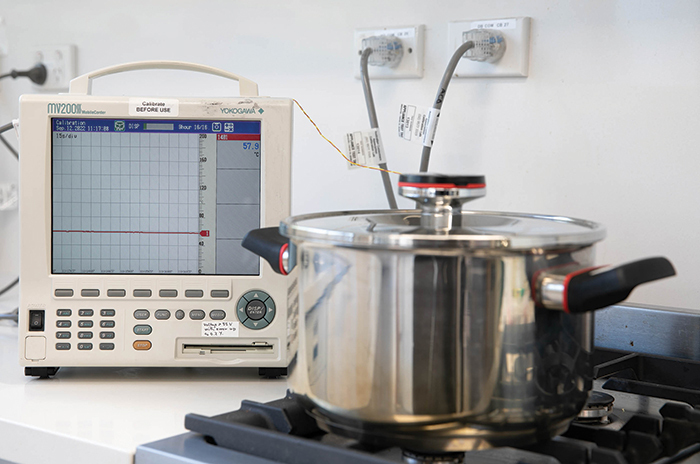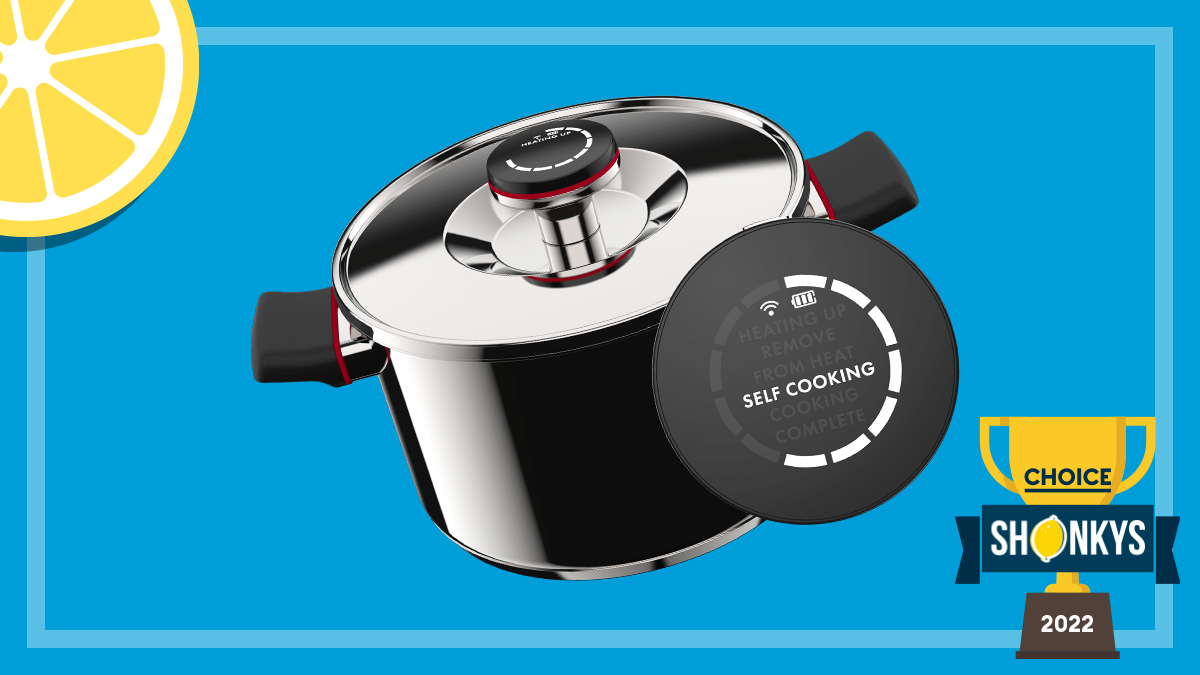Appliances such as robot vacuums and self-cleaning ovens take care of the domestic drudgery, letting you get on with more rewarding things. So a product that claims to cook dinner for you sounds very appealing indeed.
Marketed as “Smart App-enabled walkaway cookware that does the cooking for you”, the Zega Digital cooking pot promises hands-off, energy-saving cooking. Its secret purportedly lies in its double-wall construction that traps heat to cook your food after you take it off the stove.
Simply put your ingredients in the pot, heat it up, then turn the stove off and let it do its “self-cooking” thing.
A few hours later, your dinner is good to go. Brilliant, right?
There’s just one problem: it doesn’t deliver.
The self-cooking pot that couldn’t
We cooked coq au vin according to the Zega app recipe, but after the self-cooking period, the chicken was partially raw, the sauce was watery and the vegetables were undercooked.
More concerningly, the meat was only 66°C in the centre – far below the recommended 75°C required to kill illness-causing microbes.
To make the dish edible, we had to cook it for a further 90 minutes. (So much for saving electricity!)

Just to make sure we hadn’t misjudged the Zega, we tested it again with different recipes.
But as CHOICE home economist Fiona Mair reports, “We ended up with the same result each time: chewy meat and watery sauce. We had to put the Zega back on the stove for another hour at least to finish cooking.”
When we contacted Zega to ask them about our results, they offered some tips and suggestions but told us the recipes have been developed and refined in their test kitchen so they should “ensure perfect results every time”.
We ended up with the same result each time: chewy meat and watery sauce. We had to put the Zega back on the stove for another hour at least to finish cooking
CHOICE home economist Fiona Mair
The point is, the Zega doesn’t actually do anything you can’t already do with a slow cooker: sear the meat, add the ingredients, put the lid on and come back hours later to find your dinner cooked.
The only difference is that the Zega doesn’t use any energy while it’s in the ‘self-cooking’ phase. But putting it back on the stovetop to finish cooking wiped out any energy savings we might have made.
It also can’t achieve that falling-off-the-bone result that a slow cooker can. It just can’t sustain the level of heat over the time needed to break down tougher cuts of meat.
The point is, the Zega doesn’t actually do anything you can’t already do with a slow cooker
But this isn’t just about creating a praiseworthy meal. It also needs to be safe to eat. Zega claims the pot will keep food above the USDA food-safe minimum internal temperature of 67°C for four hours. But when we tested this claim for a soup or stew, we found that after four hours the temperature had dropped to 53°C.
“Not only will it not cook your food, it also dips into the ‘danger zone’ below 60°C, which can cause food poisoning,” says Fiona.
Savings that don’t add up
We crunched the numbers and found that using the Zega three times a week for a year would cost a little less than running a slow cooker. But when you factor in the extra cooking time you’ll need after the Zega’s questionable “self-cooking” period, it could even end up costing you more.
With a price tag of $299, the Zega isn’t cheap, either – especially when you can pick up a recommended digital slow cooker for less than $150 that will do a better job.
“We found the Zega really disappointing,” says CHOICE kitchen expert Chantelle Dart. “It’s an unnecessary appliance.
“You could pick up a good-quality stainless steel or cast-iron pot for the same price and get better results – plus it would be more versatile.”
All the gear, no idea
What the Zega does have that most slow cookers don’t is Bluetooth connectivity and a thermometer – which sound handy until you come to use them.
The Bluetooth connection in the lid of the pot connects with the Zega app on your smartphone. The pot will determine the cooking time based on the recipe you’ve chosen in the app. It will send an alert to your phone when it’s hot enough to start self-cooking, and another alert when cooking is finished.
But if you leave the house or even just move to another room that puts you out of Bluetooth range, you won’t get the alert to let you know the meal is done. Sure, you could keep an eye on the time yourself or set your own timer. But the manufacturer’s decision to use Bluetooth, with its inherent limitations, for this function seems a flawed idea.
The manufacturer’s decision to use Bluetooth, with its inherent limitations, for this function seems a flawed idea
As for the thermometer, it doesn’t tell you the temperature of your pot and its contents. It simply lets you know when the pot’s hot enough for you to switch off the stove and start ‘self-cooking’.
So what do you get for your money?
An expensive stainless-steel pot that holds heat pretty well (but not well enough to cook your food), a thermometer that doesn’t give you a temperature reading, and a Bluetooth timer you shouldn’t rely on.
Not to mention a supposedly ‘self-cooking’ appliance that will see you slaving over a hot stove anyway to do the cooking that it didn’t do.
More 2022 Shonky Award winners

